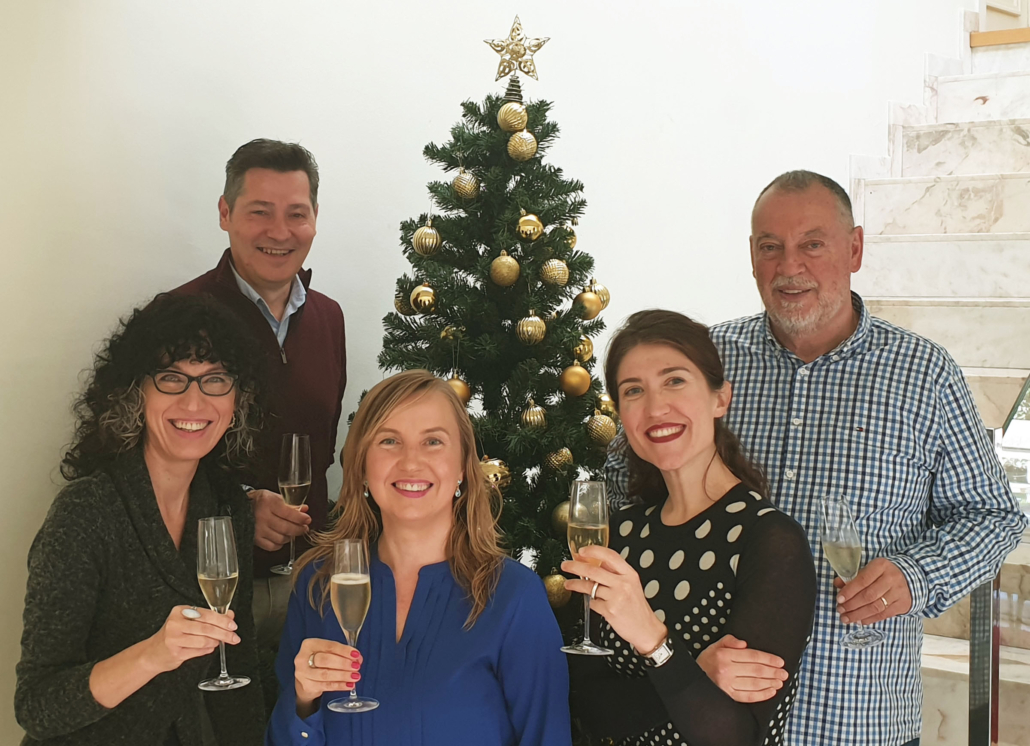
We all wish you Happy Holidays and a very healthy and prosperous 2020!
Travel with us this new year to Spain, Portugal, France and/or Italy on a fabulous private tour, to make 2020 even more special!

We all wish you Happy Holidays and a very healthy and prosperous 2020!
Travel with us this new year to Spain, Portugal, France and/or Italy on a fabulous private tour, to make 2020 even more special!
Christmas is a very religious and traditional time here in Spain, with truly unique events, such as live Nativity Scenes, bizarre local traditions like Caga-tio (or Pooping Log) and beautifully emotive Catholic celebrations. The Spanish Christmas season starts off with the Catholic bank holiday of Immaculate Conception on December 8th. In Seville each year, the day is celebrated in front of the Gothic cathedral (the largest in the world!) with a moving dance ceremony performed by children and called Baile de Los Seises (dance of six).
The guests who join us on a private tour in Spain during the Christmas season, can experience first-hand the unique Spanish live nativity scenes, a sacred symbol of local Christmas tradition. Some of the most beautiful medieval villages in Spain magically convert for a few nights before Christmas into incredibly scenic live Nativity scenes, with locals playing the parts of Mary and Joseph, the three wise men, shepherds etc. All illuminated with torches and replete with the necessary cast of live animals, to see this is a truly unique experience!
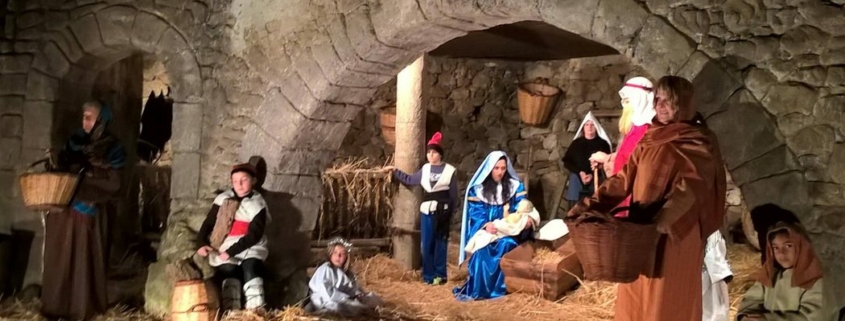
Traditional nativity scenes are set-up everywhere in Spain – in many plazas and areas where people might gather, even in storefront windows! Once we see these scenes in the streets, we can be aware that this special season is approaching!
In Catalonia and Aragòn, a beloved and typical character is the Tío de Nadal or Caga Tió. It is a hollow wooden log, about thirty centimeters long with a painted smiling face, enhanced by a little red sock hat and often a three-dimensional nose. In the days between the Feast of the Immaculate Conception and Christmas Eve, children are instructed to care for the log, giving Tió a little bit to “eat” every night and covering him with a little blanket so that he will not be cold at night. On Christmas day one puts the Tió partly into the fireplace and orders it to “poop” presents. To make him “poop”, one hits him with sticks, while singing various songs of Tió de Nadal. Before ordering the Tió to poop gifts, the adults ask children to leave the room in order for them to arrange for the small gifts from Tió to be put in place. The Tió does not drop larger objects, as those are considered to be brought by the Three Wise Men. It does leave candies, nuts, torrons and small toys: for what the Tió leaves is a communal gift rather than an individual one, to be shared by all.
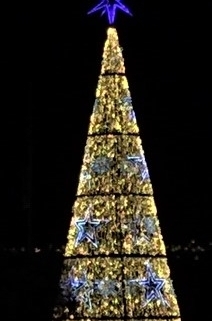
Oh Christmas tree…
Christmas Eve in Spain is called Nochebuena and like many other parts of the world, is celebrated with two very important traditions; eating an enormous meal, and going to Christmas Midnight Mass .
There is a wide variety of typical Christmas dishes one might find on plates across Spain on this night. Each region has its own distinct specialities. Among typical dishes served on Christmas Eve and during the days that follow are roast lamb and suckling pig (typically served in the regions of Castilla León, Castilla la Mancha, and Madrid), turkey or duck (commonly prepared in Andalucía), and an enormous variety of seafood, including shrimp, lobster, crab, and various types of fish like hake, trout, sea bream, sea bass, and salmon (common in many regions, but mostly on the coasts). For dessert there is quite an array of delicacies; among them are turrón (a version of nougat), made of honey, egg and almonds that are Arabic in origin, as well as polvorones, an almond shortbread and a variety of nuts and dried fruits. All these wonderful foods contribute to Christmas celebrations in Spain.
To drink, one must have a glass of cava, the Spanish equivalent of champagne. After the meal, many Spaniards get their second wind and go to midnight mass, known as “La misa del Gallo”, or “Rooster Mass”, named such because the Rooster is known as the first to announce the birth of Christ. On Christmas day people spend time with their families and feast on another large meal. Some households have children enjoy the gifts that they have received from Papa Noel (Santa Claus). The custom of giving gifts on this date is not as popular as it is in many countries, as Spaniards traditionally wait until Three King’s Day to exchange gifts. New Year’s Eve, or Nochevieja, in Spain, is quite an impressive spectacle. In all plazas across the country, one can see a similar scene that includes church bells and grapes. When the clock strikes 12, the church bells sound 12 times, and at this moment all Spaniards eat 12 grapes, one for each toll of the bell. This lively celebration will go on until the wee hours of the morning!
Epiphany (or Three Kings Day) on January 6 signifies the end of Christmas, the long-awaited day for children to receive their presents. First, in the afternoon of January 5th, a grand Three Kings Parade takes place in every Spanish city, town and village, with thousands of participants and wide TV coverage. The kings carry loads of gifts on their carriages and throw sweets to the enthusiastic crowds. Before going to bed that night, children leave their shoes out on their balcony and hope that when they wake up they will find gifts left by Melchor, Gaspar, and Balthasar. After festive lunch, families have the typical dessert of the day, the “Roscón de los Reyes”, a large ring shaped cake that is decorated with candied fruits, symbolic of the emeralds and rubies that adorned the robes of the three kings. Somewhere inside the cake there is a surprise, and the person to find it will be crowned King or Queen of the house for the remainder of the day!
We hope you enjoy a wonderful festive season ahead! If you would like to witness and partake in these traditional Spanish festivities first-hand, join us for a private tour around Christmas and New Year: for example, if you choose our Majestic Madrid & Authentic Andalucia Tour you too can watch first hand the ceremony of Los Seises from Seville Cathedral or soak up the atmosphere while eating grapes on New Year’s Eve in Spain’s glorious capital of Madrid!
Spain, the largest producer of olive oil in the world, with the impressive average of 44% of the world’s supply of olive oil each year, is paradise for us olive oil lovers! Over 250 varieties of olive trees in Spain produce twice as much olive oil as Italy and four times as much as Greece! The olive oil harvest time, from early November till mid January, with many olive oil festivals all over the country, is a perfect opportunity for an authentic Spanish food and wine tour! On your foodie trip with us you can visit charming local olive oil artisans, participate in lively olive oil festivals in local villages, see their olive mills in full swing and taste the freshly pressed olive oil – its aroma and taste are truly delicious!
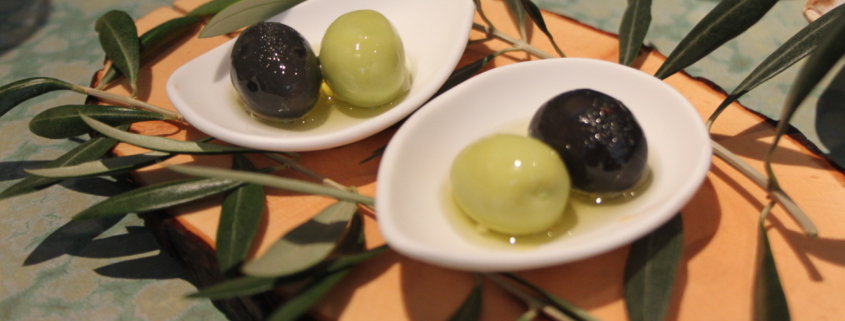
Olive trees, though native to Asia Minor, have been grown around the Mediterranean since the 8th millennium BC. Cultivating and eating olives has existed before written language came to be! The Phoenicians brought olive trees to southern Spain almost 3000 years ago, so it is no wonder they are such an integral part of Spanish cuisine and agriculture.
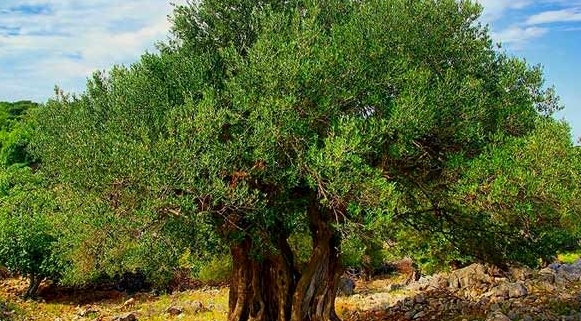
The Spanish region of Andalucia grows most of the world’s olive oil, but Catalonia produces some of the world’s best and most distinct in flavour. The first official protected designation of origin for Spanish extra-virgin olive oil was bestowed on the Catalan Oli de Borges in 1975.
Nowadays, the most prestigious Olive Oil D.O. in Catalonia is Siurana, where the legendary OleAurum DOP Siurana oil was born. Here, on the outskirts of Reus every November, the Siurana Olive Oil Fair takes place, a lively event gathering the most important producers of the DOP Siurana. Olive and olive oil tastings abound, as well as a raffle whose winner succeeds in being given their ‘weight in oil’!
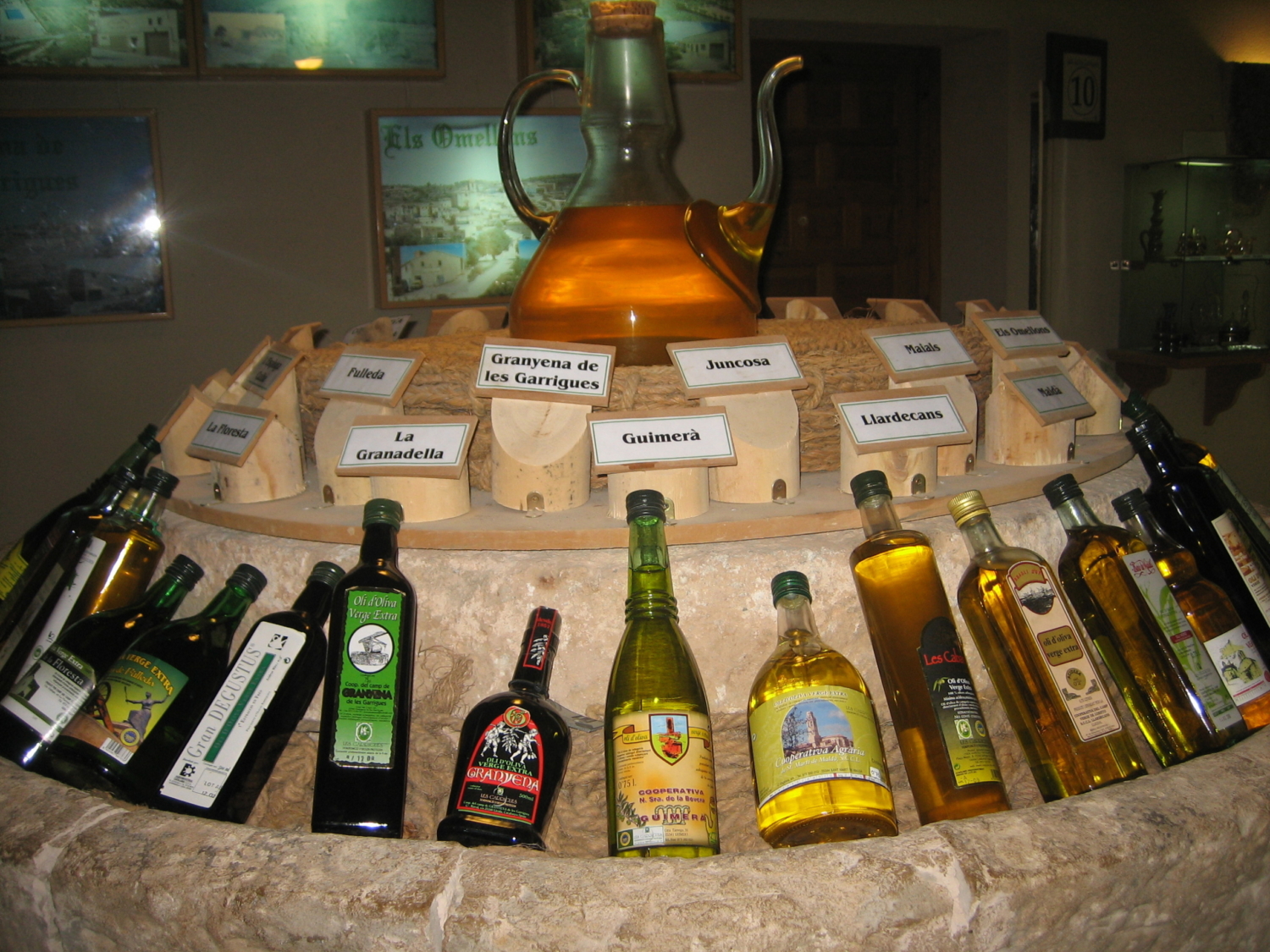
So many olive oils to choose from!
In Andalucia, Jaen is the iconic olive oil region, with miles and miles of olive orchards and many olive oil producers and co-operatives. During the olive harvest, between November and February, you can enjoy here not only fantastic olive oil mills visits and tastings, but also lively traditional gatherings and gastronomic festivals, like the one in Martos, where you can participate in the harvesting of olives and see the extraction of olive oil from the olive. A delicious end to this festival is the handing out of ´hoyos´ by local olive growing families, a traditional dish of bread, oil, salt, cod and olives.
The beautiful Catalan region of Priorat, well-known amongst the wine lovers for its mind-blowing reds, also abounds in excellent olive oil. Here the Oil Festival of Cabacés takes place on the first weekend of December and includes olive oil tastings, guided tours of the local mills, displays of country produce, as well as music and a communal lunch.
We are passionate about our olive oil and would love to assist you with a Spanish foodie tour, so you can experience the ambience and conviviality of these very community-strong olive oil festivals here in Spain, be it south or north!
The 2020 Michelin Guide to Spain & Portugal, awarding the coveted Michelin stars, was presented last night from the beautiful Lope de Vega Theatre in Seville, with a dinner served by the Spanish chef Angel León, owner of the Michelin 3 star Aponiente. Oh what a night!! We are excited to report that the Spanish restaurant Cenador de Amos, in the beautiful Cantabrian countryside, has been awarded their third Michelin star, so Spain maintains 11 three Michelin star restaurants, despite the closure of Dani Garcia’s establishment. In Portugal, our belowed Casa de Chá da Boa Nova, the fantastic restaurant close to Porto run by our favourite Portuguese chef, Rui Paula, was awarded their second Michelin star!
So, for 2020 in Spain there are now total 11 restaurants with 3 Michelin stars, 29 restaurants with 2 Michelin stars and as many as 174 with 1 Michelin star! In Portugal, there are total of 29 restaurants with Michelin stars in 2020, 7 with 2 Michelin stars, one of them new, as well as 4 new Michelin one star restaurants, although no new three Michelin stars this year.
Below is a list of all Michelin 3* Restaurants in the 2020 Michelin Guide to Spain & Portugal, by region:
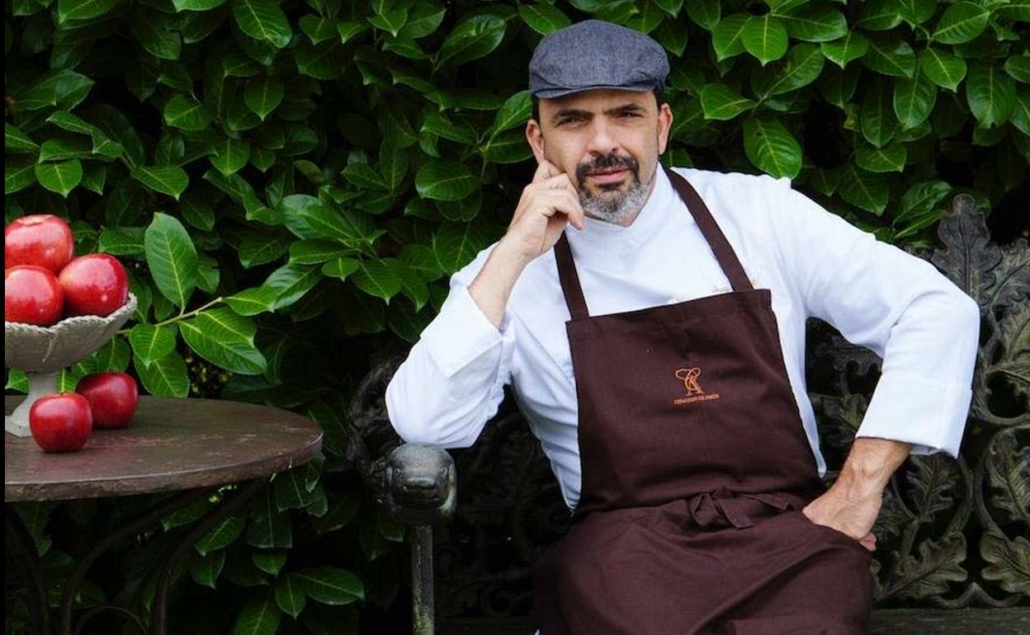
Jesus Sanchez: now with 3 Michelin stars
Cantabria Michelin 3* Restaurants:
El Cenador de Amós (Villaverde de Pontones) – a new addition to the Michelin guide of Spain & Portugal Michelin, this fantastic restaurant is located in a beautiful typically northern Spanish casona. Run by the talented chef Jesús Sanchez, it won its third Michelin star for “its tireless search for the emotive experience of food, and the sensory details that leave you remembering a culinary experience”.
Catalonia Michelin 3* Restaurants:
Àbac (Barcelona)
El Celler de Can Roca (Girona)
Lasarte (Barcelona)
Madrid Michelin 3* Restaurants:
Diverxo (Madrid)
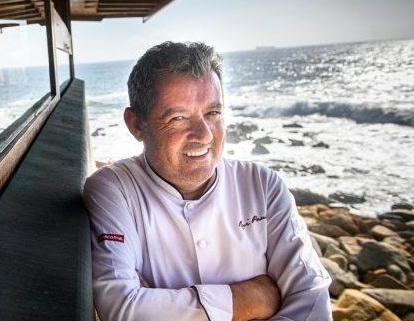
Rui Paula
Valencia Michelin 3* Restaurants:
Quique Dacosta (Dénia, Alicante)
Basque Country Michelin 3* Restaurants:
Akelarre (Guipúzcoa)
Arzak (Guipúzcoa)
Azurmendi (Larrabetzu, Vizcaya)
Martín Berasategui (Guipúzcoa)
Andalucía Michelin 3* Restaurants:
Aponiente (Cádiz)
Aside from the usual red Michelin stars, the Michelin guide has awarded for the first time their Sustainability Award, which was given to Angel Leon, for “constantly defending the sea”. The chef of Aponiente, the only restaurant with three Michelin stars in Andalucia, thanked the guide for finally recognizing the region’s cuisine.
All 29 Michelin starred Restaurants in Portugal in the 2020 Michelin Guide to Spain & Portugal:
In the Michelin Guide Spain & Portugal Bib Gourmand category (the best price-quality relationship) there are as many as 267 restaurants to be found in 2020! In the “Michelin dish” category ( quality dishes recommended by Michelin guide) there is an amazing number of 837 restaurants! So come and join us on a fantastic food and wine tour along the Michelin restaurant route through Spain and Portugal and experience these Southern European culinary jewels for yourself!
Spain, France and Italy are paradise for truffle and mushroom lovers in winter, when prestigious white and black truffle festivals and lively wild mushroom markets abound! Piedmont’s legendary white Alba truffles, the iconic Périgord black diamonds or the amazing array of wild mushrooms in Catalonia are best enjoyed at source at these authentic local truffle and mushroom feasts!
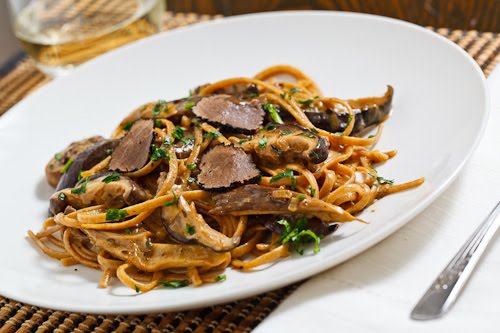
Typical fresh black truffle and wild mushroom pasta in Italy
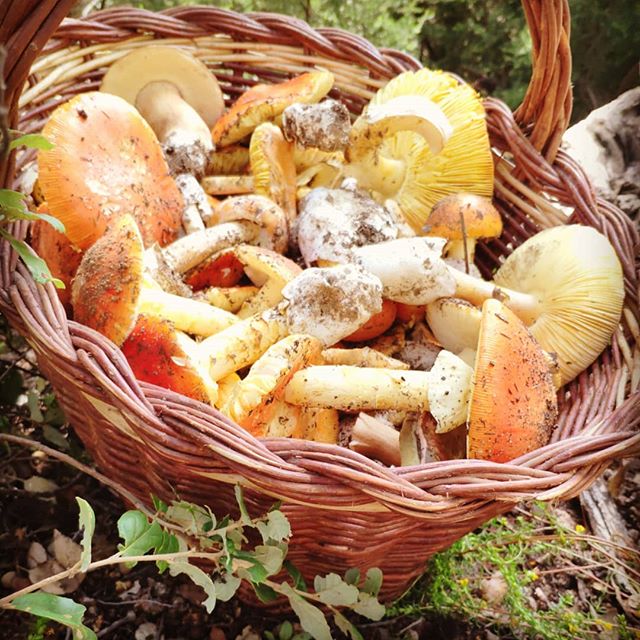
Freshly picked Catalan wild mushrooms
Both truffles and mushrooms love the dark and damp, though there are many differences between these beloved fungi.
Truffles are a tuber, which is a type of subterranean fungus, so do come from the same kingdom as the venerable mushroom. Unlike mushrooms (of which most tend to resemble an umbrella in shape), truffles, whether of the black or white variety; look similar to a misshapen potato in size and form.
Truffles are only found growing underground beside the root systems of oak or hazelnut trees, preferring precise conditions of moist, warm days and cooler nights, which the heavily wooded areas of France’s Provence and Dordogne, Italy’s Piedmont and Spain’s Aragon, provide.
In season, we have many harvest festivals celebrating truffles & mushrooms here in Spain, France & Italy. Perhaps the most prestigious one is the International Alba White Truffle Festival in Piedmont, that takes place from October through to November. From there, you can travel to Tuscany where in November you can taste more exquisite white truffle at the San Miniato Truffle Fair. In France the black truffle is the star of the show. The best black truffle festivals are in January, the Sarlat Truffle Festival in Dordogne and Sorges Truffle Festival in Provence being the most important. For an unforgettable truffle experience, join us on a private gourmet truffle and mushroom hunting tour, where you will not only experience the lively truffle markets, truffle and mushroom cooking demonstrations and other gastronomic events, but also hunt for these delicacies yourself! Funnily enough, the completely unknown area of Teruel in Spain not only produces some of the best black truffles in the world, but also is thought to produce the largest quantity! Away from the international buzz, this is the perfect place to feast on truffles at excellent local restaurants without the exorbitant price tag.
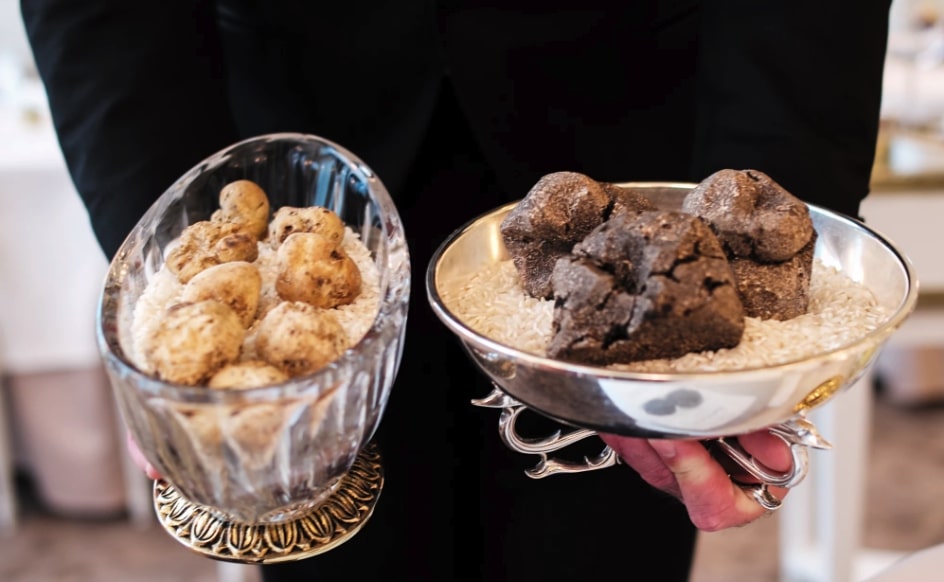
White and black truffles once they have been dug out from the earth… they taste much better than they look!
While in Spain truffle-hunting, why not feast on wild mushrooms as well? The Catalan region at the foot of the Pyrenees provide excellent conditions for mushroom hunting and is well known among European mushroom lovers. If you would like to experience mushroom picking in Spain, join us for a Mushroom Hunting Getaway Tour, immersing yourself in its damp, woodland world. Feel underfoot the crush of fallen leaves and the scent of rain and earth as our expert mushroom hunting guide takes you to his secret spots to pick some tasty and nutrient-rich fungi.
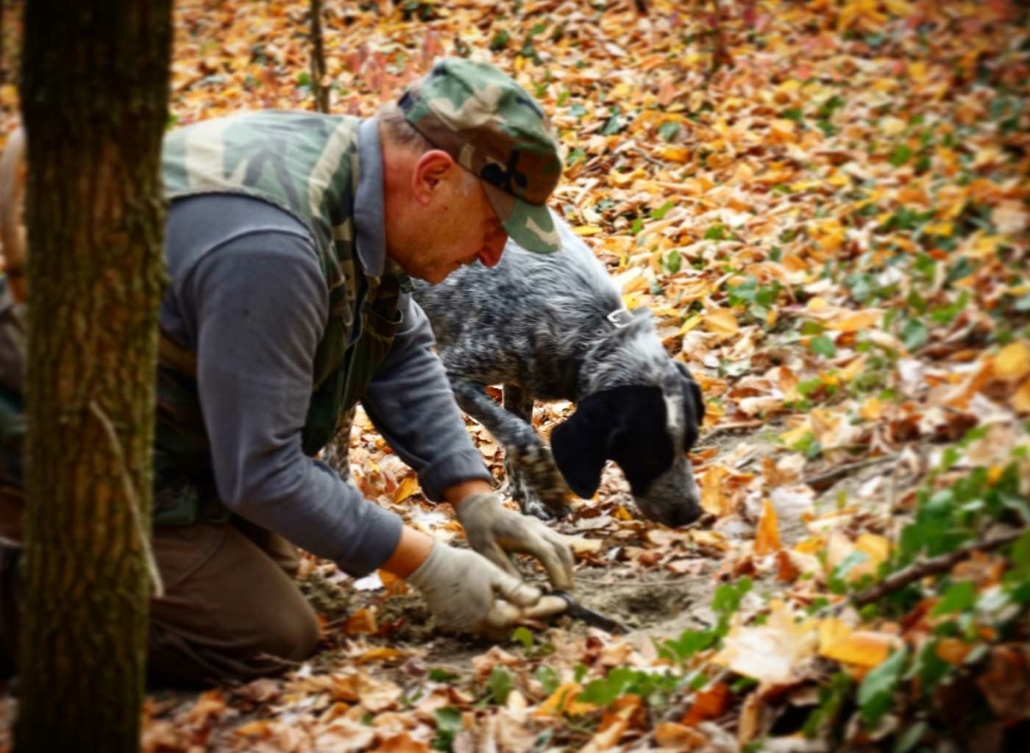
Two truffles hunters hard at work in the forest close to Alba, Piedmont
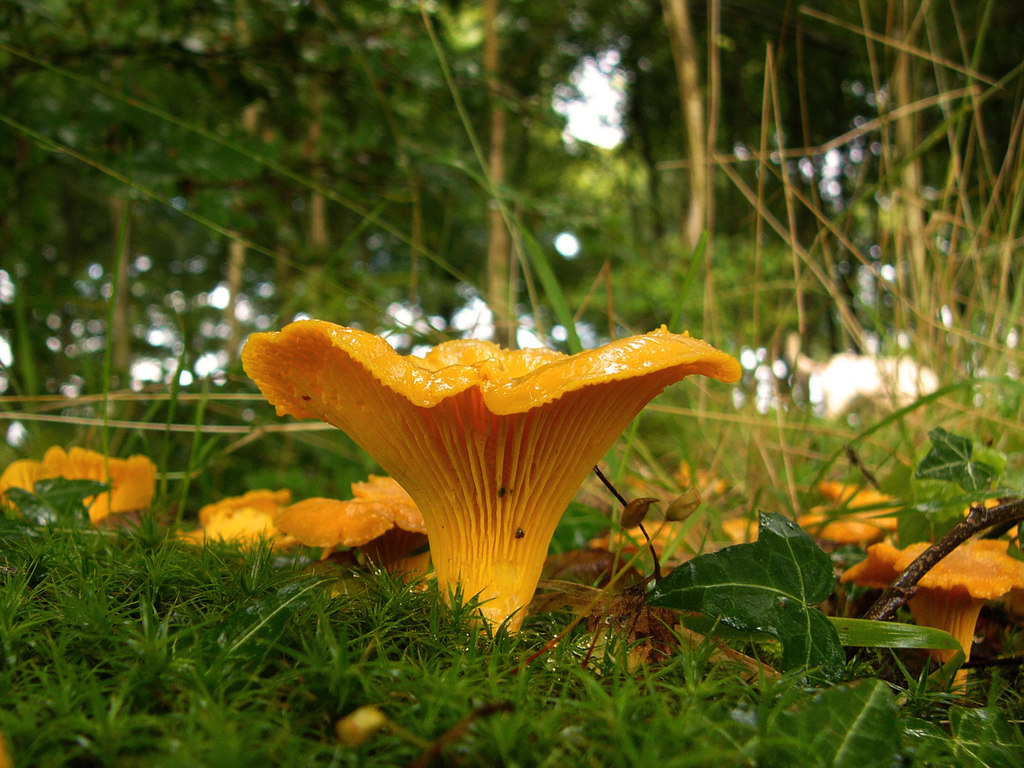
Some glorious Spanish chanterelles ripe for picking…
In terms of cuisine, the humble and versatile mushroom is widely used in Spain in meaty stews, creates a rich risotto with arborio rice and white wine in Italy, or pan fried with garlic and herbs as an accompaniment in France: really, the choices are many!
When you taste the flavour of truffles, they are best enjoyed fresh and of course, uncooked. Come and enjoy the truffle season with us, feasting on freshly harvested aromatic thinly sliced truffle atop pasta or polenta in Italy, on an omelette in France or atop a hearty filet in Spain.
When it comes to ‘hunting’ both types of fungi, experience and knowledge of the best spots is crucial and our guides are true experts. Then for mushroom hunting a good set of eyes is enough, whereas finding truffles requires the expertise of a trained dog as well; to lead you to this culinary gold, and then for the ‘hunter’ to dig them out.
Either way, truffle & mushroom hunting in Spain, France & Italy is a fun and very authentic experience, so come on board and let us organise the perfect truffle and/or mushroom hunting getaway tour for you!
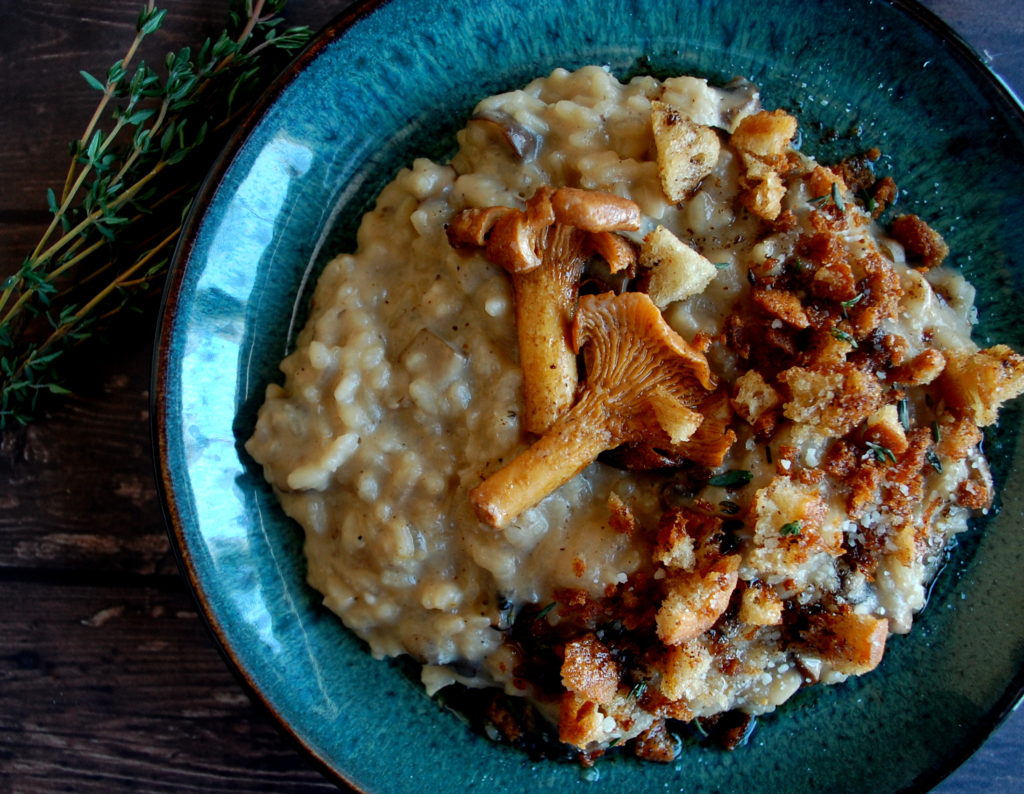
Italian wild mushroom risotto with pangratatto
For a true Italian food lover, Parma and Bologna are gourmet bliss! Ever tried real Parma ham? Authentic Parmesan cheese? What about that sweet and viscous salad dressing of balsamic vinegar of Modena? Without doubt you are sure to have eaten a version of `Bolognese’ sauce dressed over some delicious lasagna sheets, right? All of these wonderful Italian ingredients originate in Emilia Romagna, the region between the well-known cities of Milan (in Lombardy) and Florence (in Tuscany).
Why you must include Emilia Romagna on your next food and wine tour of Italy
Emilia Romagna is such a foodie haven, that its capital city Bologna, is known amongst Italians as `La Grassa’ (the fat one). We have Bologna to thank for what we English-speakers know as ‘Bolognese sauce’, a rich and thick tomato sauce with minced beef through it, sat atop (usually) spaghetti or tagliatelle pasta, or cooked into a lasagna. The perfect way to warm up on a cold winter’s day! When it comes to pasta, Emilia Romagna has no less than twenty-three regional varieties! Here is where lasagna was born, as well as tortellini, fettuccine and tagliatelle. In fact, with over 200 traditional products now protected by law, Emilia-Romagna is undoubtedly the heart of classic Italian home cooking.
For you food-lovers and gourmets out there, we would love to create a customized food and wine itinerary in this historically-rich Italian region. Although our specialist food and wine travel agency is based in Spain, we have great Italian experts in our team, as we provide food and wine itineraries of Italy for our cherished repeat clients, all of whom (like us!) appreciate nothing more than a great meal in a scenic spot with good company… So if for your next European adventure you want to visit authentic local producers and the more hidden corners of this magnificent country, our Italian travel specialists will make sure that you encounter everything you want to on your ideal Italian food & wine vacation!
When in Emilia Romagna (that’s ‘romaña’, English-speakers!) with us you will dine like an Italian aristocrat no matter where you go, from the local trattoria to the dining room of Osteria Francescana, the 3-Michelin-star restaurant in Modena, run by well-known food-lover and chef Massimo Bottura. In the Parma and Bologna area the respect for tradition and locally-sourced ingredients is strong: so be ready to encounter some incredible freshly made, home-cooked fare with its many beloved ingredients.
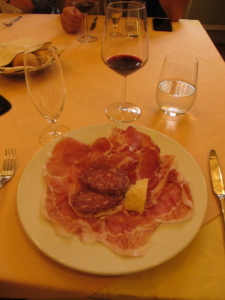
A typical platter of antipasto in Parma. Buon appetito!
Parma is the second-largest city in Emilia Romagna, and the birthplace of renowned composer Giuseppe Verdi; so here you will not only find fantastic food, but marvellous opera at its ‘Teatro Regio’. Parma gives its name to the beloved cheese, Parmesan (who can have a pasta dish without it?). Parmigiano-Reggiano is a D.O.P (Designated Origin Protected) cheese that is believed to have been created by monks as a way of preserving milk. Genius!
Watching someone cut open a wheel of Parmigiano-Reggiano (and at 35kg, they are difficult to manoeuvre!) is a spectacle in itself – you will see how laborious it is, as the knife makes its way into the hardened flesh of this incredible cheese. Then you will enjoy some Parmesan cheese local-style, a chunk with fresh crusty bread, a slice of Parma ham, and a drizzle of balsamic vinegar for sweetness. Buonissimo!
When it comes to all things pig, the locals of Emilia Romagna have that covered too! We have their ancestors to thank for Prosciutto di Parma (produced from the pigs’ hind-legs) and Culatello di Zibello (considered the king of meats, it is made from the fatty back-end of pork) which is a ruby-red, melt-in-your-mouth kind of affair. On your gourmet Italian tour with us in the Parma and Bologna areas, you will taste some amazing prosciutto di Parma and Culatello di Zibello ham at local artisan producers.
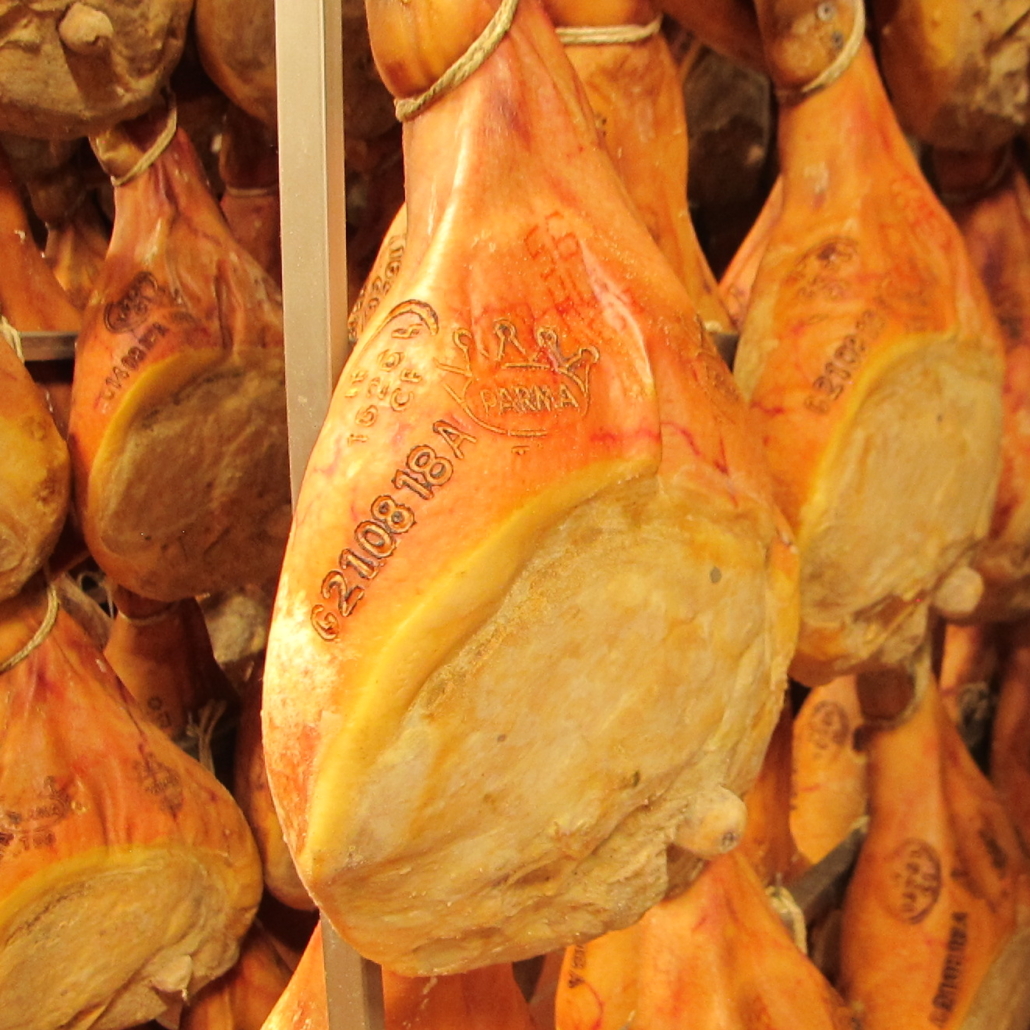
The Parma Crown means an authentic 100% natural product: no additives or preservatives, just sea salt, air and time…
A world-renowned Italian product which cannot be overlooked for its uses is the vinegar Balsamico di Modena, a condiment which has been produced for centuries. Made from the must of Trebbiano grapes, it becomes denser and sweeter as it ages in the barrel, and can be used to dress various types of meats , cheeses and roasted vegetables, as well as add a dash of sweetness to sugo al pomodoro (tomato sauce) or stone fruit warmed on a griddle for dessert with gelato. Buon appetito!
Join us on an authentic hidden Italy food and wine tour, discovering not only the “must-sees” but also the just-as-beautiful but lesser-known parts of this glorious country. Experience visits to charming local food artisans, Parmesan cheese and ham producers and enjoy the company of our excellent and fun local guides – you may even want to try your hand at making some tortellini!
Please note that we create only our own private itineraries, working directly with carefully hand-picked and proven providers, so we can easily custom-make a perfect Italian tour to suit your preferences, with no additional costs.
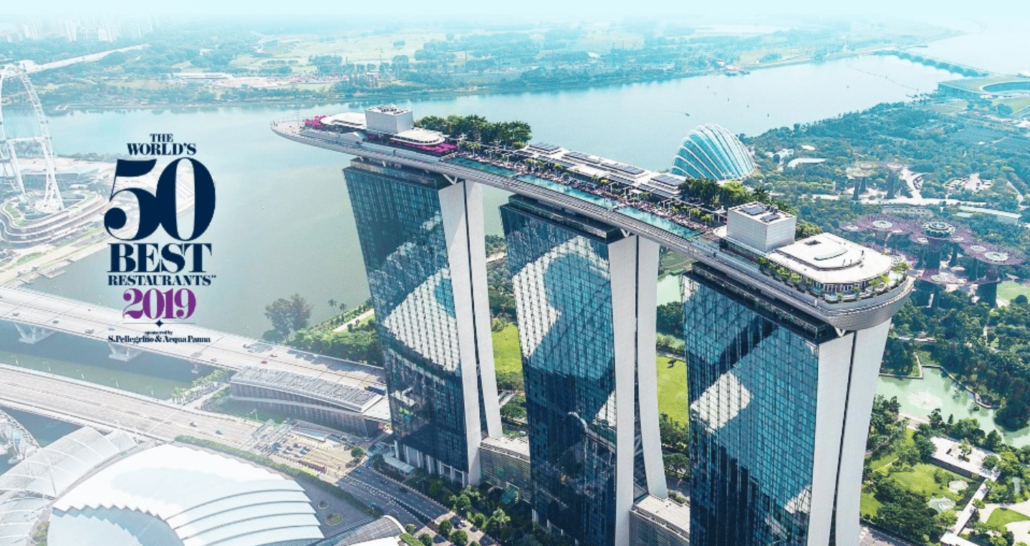
RESULTS ARE IN! The 18th edition of the acclaimed Restaurant Magazine’s ‘World’s 50 Best Restaurants 2019’ are here to peruse below. True foodies – be advised that you can experience any of the restaurants marked in red on our private bespoke Michelin starred routes along Spain, Portugal, Italy and SW France :-)
1: Mirazur (Menton, France)
2: Noma (Copenhagen, Denmark)
3: Asador Etxebarri (Atxondo, Spain)
4: Gaggan (Bangkok, Thailand)
5: Geranium (Copenhagen, Denmark)
6: Central (Lima, Peru)
7: Mugaritz (San Sebastian, Spain)
8: Arpege (Paris, France)
9: Disfrutar (Barcelona, Spain)
10: Maido (Lima, Peru)
11: Den (Tokoy, Japan)
12: Pujol (Mexico City, Mexico)
13: White Rabbit (Moscow, Russia)
14: Azurmendi (Larrabetzu, Spain)
15: Septime (Paris, France)
16: La Plaza Athenee (Paris, France)
17: Steirereck (Vienna, Austria)
18: Odette (Singapore)
19: Twins Garden (Moscow, Russia) NEW ENTRY
20: Tickets (Barcelona, Spain)
21: Frantzen (Stockholm, Sweden)
22: Narisawa (Tokyo, Japan)
23: Cosme (NYC, USA)
24: Quintonil (Mexico City, Mexico)
25: Alenno Paris au Pavillon Ledoyen (Paris, France)
26: Borago (Santiago, Chile)
27: The Clove Club (London, UK)
28: Blue Hill at Stone Barns (NY state, USA)
29: Piazza Duomo (Alba, Italy)
30: Elkano (Getaria, Spain)
31: Le Calandre (Rubano, Italy)
32: Nerua (Bilbao, Spain)
33: Lyle’s (London, UK)
34: Don Julio (Buenos Aires, Argentina) NEW ENTRY
35: Atelier Crenn (San Francisco, USA) NEW ENTRY
36: Le Bernardin (NYC, USA)
37: Alinea (Chicage, USA)
38: Hisa Franko (Kobarid, Slovenia)
39: A Casa do Porco (Sao Paulo, Brazil)
40: Restaurant Tim Raue (Berlin, Germany)
41: The Chairman (Hong Kong)
42: Belcanto (Lisbon, Portugal)
43: Hof van Cleve (Flanders, Belgium)
44: The Test Kitchen (Cape Town, South Africa)
45: Suhring (Bangkok, Thailand)
46: De Librije (Netherlands)
47: Benu (San Francisco, USA)
48: Ultraviolet (Shanghai, China)
49: Leo (Bogota, Chile)
50: Schloss Schauenstein (Switzerland)
Come and join Gourmand Breaks for a culinary local tour of Michelin-starred restaurants in Portugal, Spain, France or Italy.
The 2019 edition of ‘The World’s 50 Best’ Restaurants has slightly changed shape.
A new addition to the awards’ lists, is the ‘Best of The Best’; created specifically to honor those who have taken the #1 spot of ‘The World’s 50 Best’, as they can now no longer be in the running to compete; as previous winners. This allows new entrants to vie for the top prize without having to compete with the restaurants who have won time and again. This means chefs such as Ferran Adria, Massimo Bottura and Rene Redzepi can only receive the sought-after #1 if they open a restaurant in new premises.
The 51 – 100 World’s Best Restaurants List 2019 was revealed yesterday (Full List HERE) and places have been tipped upside-down, meaning that there will be quite a few new entries in ‘The World’s 50 Best’. What we do know is that there are six restaurants from Spain, one from France and three from Italy in the 2019 list of the World’s Best Restaurants; coming in between 51 and 100. At number 51 there is Niko Romito’s Reale Castel di Sangro, San Sebastian’s Arzak in 53rd place, and DiverXO (Madrid) gaining momentum from No. 96 last year to No. 75 this year. Albert Adria’s Barcelonan restaurant Enigma goes higher up the list in its second year; now coming in at No. 82.
As fascinated by fine cuisine and wine as we are here at Gourmand Breaks we thought it best to show how the ‘World’s 50 Best Restaurants’ do in fact get chosen:
Each Academy member votes for 10 restaurants; at least 4 of these must be for restaurants outside their home region. Each member submits their 10 choices in order of preference, and they must also have eaten in the restaurants they nominate within the last 18 months.
Academy members cannot have financial interest in any restaurant they vote for, and they can only vote for a restaurant based on a dining experience that takes place at the restaurant itself. Nominations must be made for the restaurant, not for the restaurateur or the chef; and members of the Academy must remain anonymous.
The Douro Valley , Portugal, is considered to be one of the most spectacular wine regions in the world with its characteristic terraced vineyards on sloping hills that meet the meandering river below and the peaceful Pinhao, (pronounced Pin-yeow), in the very heart of the Douro Valley. Many of our Private Wine Tours in Portugal include this iconic wine region, the perfect place to spend 2 or 3 days and submerge your senses in the Portuguese countryside. You will definitely switch off from the city life here as this wine area enchants you, enveloping you in its refreshing breath.
Take full advantage of this relaxing haven by taking a stroll beside the Douro River, a drive around this incredibly beautiful area, or ride the train meandering alongside the water. Pinhao station is considered one of the most symbolic locations on the Upper Douro wine circuit. The picture postcard train station has 25 blue glazed tile panels covering the main building, representing the local landscapes and habits, predominantly of wine making. The Pinhao to Pocinho route is considered one of the world’s most scenic journeys ; the rail line runs just along the river with of course the resultant breathtaking views of the terraced vineyards on the other side.
Our charismatic licensed local chauffeurs Miguel and Francesca, with time have become true experts in the Douro Valley wine and wineries. Nowadays, accompanied by them, you will not only visit the best wineries, but learn a lot about the fascinating world of Port and other Portuguese wines. Or maybe, you might prefer the freedom of self-driving, in which case we will gladly provide a luxury rental car. Either way, explore our favorite hidden corners of the Douro Valley wine region and even travel to Vila Nova de Foz Coa with some spectacular views as the roads wind erratically up and down the mountainside between the different valleys. The town is beautifully situated high above the River Coa, one of the tributaries of the Douro. This is very much an area of olives and almonds, in particular, make a beautiful sight in early spring. Vila Nova is also the closest town to the 22,000-year-old rock paintings, which were discovered during the construction of a new dam.
Another leisurely excursion to make is to Sabrosa, a short drive to the north of Pinhao, the birthplace of Fernao de Magalhaes (Ferdinand Magellan), who was born there in 1480. One ship of his fleet of five (commanded by the Basque Juan Sebastian de Elcano) was the first to circumnavigate the globe between 1519 and 1522. Magellan himself was killed en route in the Philippines.
This intoxicating atmosphere can also be fully explored with various experiences that await you on your Customized Private Tour of Portugal, whilst in Pinhao. A private port wine tasting with an expert at your hotel provides an excellent opportunity to start to get to know the best ports of Portugal. Port wine is a wine developed in Portugal by the British. To make the wine, it ferments for only 2 to 3 days, has brandy added, and then is aged in wooden barrels. How long it ages determines the taste and how sweet the wine is.
There are generally five different types of port wine – white, ruby, tawny, late bottle vintage (LBV), and vintage. White is aged early and is young and robust. Ruby is aged for 3 years with a strong grape and pepper taste. Tawny varies from 10 to 40 years and is aged in smaller wooden barrels and with a light, mellow taste. Late Bottle Vintage is aged 4 to 6 years while vintage is from a single harvest and is aged for 2 years in wood and then 10 to 30 years in the bottle. All port wines are medium sweet but they do range from a drier, less sweet to very sweet. Enjoy trying to distinguish between the 5 different types of port wine!
A privately skippered Rabelo cruise on the Douro River is also a favorite of our clients, as it offers a great chance to see the beauty of the area and the many wineries running down towards the river. These cruises are on replica Vintage boats traditionally used to carry the wine down the river from Douro to the lodges in Oporto. A less luxurious option but still a chance to cruise the river would be to join one of the small group excursions on regular boats, which we can also arrange. Whichever way, they are both a great opportunity for you to see the beauty of the area and the many wineries running down towards the river.
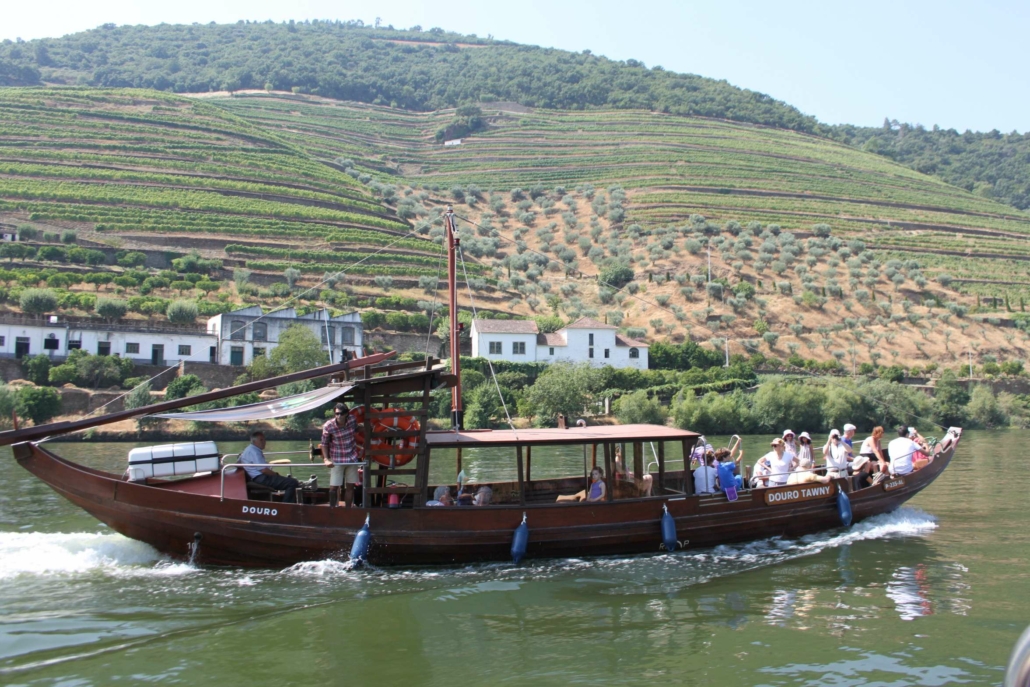
The wines from this region are prized for their solid backbone and concentration and this can be seen at some of our favourite wineries. Enjoy a private visit (or two), with wine-tasting, to a prestigious winery in the Douro Demarcated Region, here are a few personal favorites:
– A famous flagship Quinta that is beautifully maintained and picturesquely located just up the river, with gorgeous views of Pinhao. Tour the cellars to see the production processes that have been used over the centuries and how they have evolved.
– A Quinta that is famed not only for its sophisticated wines but also for its dramatic, mind blowing views. References date as far back as the early seventeenth century, long before the Douro became the world’s first demarcated wine region in 1756.
– A world famous port producing Quinta whose reputation goes back to the 18th century. The property at the moment totals just over 76 hectares. All of the grapes are foot trodden in granite lagares situated on the property.
Whatever you decide to see and do, Pinhao is perfectly placed to discover the spectacular Douro Valley , enjoy Portuguese Wines and tantalize your taste buds. Sample the Portuguese cuisine by dining at some of our favorite local haunts or even treat yourself to a luxury Michelin starred meal while you’re in the area, at the incredible Rui Paula restaurant, overlooking the river. Accommodation-wise, we can book you into a charming 5-star hotel overlooking the river or if you prefer, a fantastic hilltop winery hotel with spectacular views or a unique quaint historical lodge in the wine country.
Come and discover Pinhao and the Douro Valley on our Luxury Private Tour of Portugal: Wine and Culture
If you are short on vacation time but in need of some exhilarating scenery and fresh air then the Romantic Escape to The Douro Valley Private tour is perfect for you. Read more
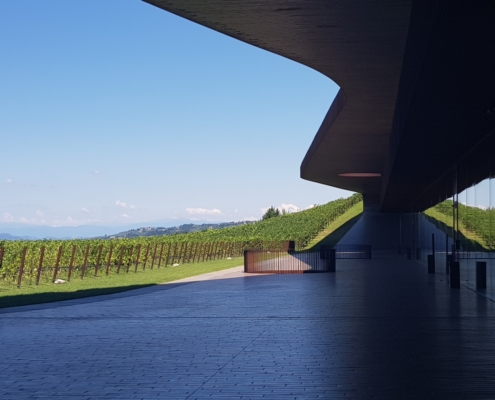
On your next vacation in Italy be sure not to miss out the beautiful Chianti Classico wine region in Tuscany, especially if you are a wine lover! Explore the enchanting Chiantigiana wine route, the land of Sangiovese, and taste different expressions of this Tuscan noble grape on our Authentic Italy Bespoke Food & Wine Tour! Listed in alphabetical order, discover some of our favorite wineries of this region, as noted below:
1) Antinori nel Chianti Classico
The famous state-of-the-art, Antinori nel Chianti Classico, winery awaits you; to say it is impressive is an understatement! A story that began in 1385, your visit with an in-house expert will reveal their truly magnificent innovative eco-friendly architecture blended with the surrounding scenery, and once inside the cellars, you will view their sophisticated wine making processes. You will enjoy their most suggestive and unusual tasting spaces, as you savour their flagship Chianti Classico wines, from both this, sleek and modern, as well as from another ancient, and also very prestigious, Badia di Passignano cellar by the same company.
Should you wish to explore the Antinori Tuscan estates further, the nearby quaint estate of Antinori’s Badia Passignano, is truly worth visiting, with its fabulous reds, made from a selection of the best Sangiovese grapes harvested from the monastery’s historic vineyards. The historical property extends over 223 hectares, of which 65 hectares are planted with vines. We will gladly arrange for a wine expert to take you on a memorable tour of the property and you will taste some of Antinori’s mythical wines such as Tignanello, Cervaro della Sala, Chianti Classico Riserva Badia a Passignano, Guado al Tasso, and Solaia. After the cellar visit, enjoy an extra virgin olive oil tasting. If you have the time make sure to book at Osteria a Passignano for dinner that evening, you won´t be disappointed!
Another “not to be missed” winery is Castello di Brolio, one of the most important and historic Chianti Classico-producing estates. This is possibly the oldest winery in Italy, whose founder, the famous Barone di Ricasoli, was responsible for formulating the grape mix of Chianti Classico during the late 19th century. Your in-depth tour with an in-house expert will take you on a journey of nearly a thousand years to the remarkable ancient castle of the estate, around the grounds, to see the chapel and also to appreciate the great views across the surrounding countryside from the panoramic terrace. You will then head to the impressive modern winery where you will experience a tasting of several top Chianti Classico wines.
If you’re looking for the complete package where you can stay, drink, eat and be merry then look no further than this quaint ancient village. The history of the Mazzei family dates back to 1435, their estate covers an overall surface of 650 hectares, where “only” 117 hectares is utilized for their special vineyards. The grapes here are harvested by hand, turned into wine and aged in wood barrels, it´s no wonder the excellence of their wines are renowned worldwide! Be prepared for a new sensory experiences and unique ambiance with a visit to the winery where you will discover the most important wines of Fonterutoli and the other Mazzei estates.
This fantastic historic estate has been welcoming guest since 1256, the first accounts date back to the eleventh century, when it was the property of the Benedctine monks. With the land extending across 2,400 acres, of which 400 are dedicated solely to vineyards, you will surely be fascinated by the prestigious wines on this visit. About 70% of the grapes are harvested by hand due to two factors, the slope of land and the commitment to selecting only the best fruit. As well as a great guided tour and tastings, you can also enjoy lunch or dinner at the restaurant, Fornace di Meleto. Make sure you collect some unique bottles from their wine shop once you have experienced your favorites!
The owners of Castello di Vicchiomaggio have dedicated their lives to preserving centuries-old tradition, where wine is still produced in their hilltop historic castle. The estate covers 140 hectares, of this 34 are vineyards and 10 are olive trees, leaving the rest as a park. The tour of the vineyard and historical cellars allow you to discover the secrets of the production of their award winning wines and to learn about their indigenous grapes such as Canaiolo and Colorino. Afterwards you can choose to continue your experience with wine tasting and lunch in the restaurant of the castle or with a tasting and a dinner paired with the labels belonging to the castle.
This incredible winery nestled in a medieval hamlet of this tiny village will not disappoint, it may possibly be one of the best you experience. With an incredibly authentic feel not only can you enjoy fantastic wines but you can stay overnight in the villas, join a bespoke cooking class and enjoy succulent dishes from the restaurants. From the eleventh century the village has been intimately involved in the wine and olive oil production, nowadays producing only certified organic options. Learn about the fascinating history of how the wines are produced and how they are joined together by an underground wine duct during one of their unique winery tours.
8) Dievole
Well known for fusing traditional methods and scientific innovation Dievole focuses on the finest quality, sustainability and low environmental impact. Founded in the 11th century Dievole produces elegant wines and top extra-virgin olive oil which you can learn about on one of their many fantastic tours. Walking down the street lined with signature cypress trees, you will find yourself in the medieval hamlet, where the sommeliers will welcome you into the wine shop for a fantastic wine tasting, followed by a visit to the cellar where you will swirl and savor Dievole’s finest Chianti Classico DOCG and will also hear about their sustainable production system.
Experience a unique wine tasting and cellar visit to this small boutique winery, halfway between Florence and Siena, in the small village of Panzano. Changing ownership in 1994, to the Schmitt-Vitali family, all vineyards have since been replanted and take great care of, selecting only the right type of plants with the best rootstock. The property extends over 15 hectares of which 9 hectares are vineyards and the rest are olive groves. The organic vineyard is farmed sustainably to save the integrity of the environment, whilst taking meticulous care of the vines they only select the best grapes for the cellar which allows 40-50,000 top quality bottles to be produced each year.
10) Molino di Grace
Another small yet fantastic wine producer is this state-of-the-art winery which was built in 1997; although the vineyards have long been prosperous for over 350 years. Molino di Grace, the ‘windmill of grace’, has 30 hectares of vineyards that have been producing traditional Chianti Classico wines, and is complete with an historic 19th century windmill and world-class sculptures. The winery makes every effort to be a sustainable and bio-dynamic, producing around 250,000 bottles of Chianti Classico, Gran Selezione, Riserva, and Super Tuscan wines each year. Passionate staff offer tours of the winery including the vineyards and wine tastings of their vintages, as well as their artwork.
With our fantastic chauffeurs or on a self drive basis you will be able to tour some of these 10 Best Wineries to Visit in Chianti Classico, Tuscany and much more, as part of your private Wine, Gourmet & Cultural Tours of Italy. Feel free to browse our website and get inspired!
Gourmand Breaks is a Spanish Registered and Fully Bonded Tour Operator GC 1627, inscribed in the Commercial Register of Girona on 17 of May 1996, VAT number ESB61124814
We may request cookies to be set on your device. We use cookies to let us know when you visit our websites, how you interact with us, to enrich your user experience, and to customize your relationship with our website.
Click on the different category headings to find out more. You can also change some of your preferences. Note that blocking some types of cookies may impact your experience on our websites and the services we are able to offer.
These cookies are strictly necessary to provide you with services available through our website and to use some of its features.
Because these cookies are strictly necessary to deliver the website, refusing them will have impact how our site functions. You always can block or delete cookies by changing your browser settings and force blocking all cookies on this website. But this will always prompt you to accept/refuse cookies when revisiting our site.
We fully respect if you want to refuse cookies but to avoid asking you again and again kindly allow us to store a cookie for that. You are free to opt out any time or opt in for other cookies to get a better experience. If you refuse cookies we will remove all set cookies in our domain.
We provide you with a list of stored cookies on your computer in our domain so you can check what we stored. Due to security reasons we are not able to show or modify cookies from other domains. You can check these in your browser security settings.
We also use different external services like Google Webfonts, Google Maps, and external Video providers. Since these providers may collect personal data like your IP address we allow you to block them here. Please be aware that this might heavily reduce the functionality and appearance of our site. Changes will take effect once you reload the page.
Google Webfont Settings:
Google Map Settings:
Google reCaptcha Settings:
Vimeo and Youtube video embeds:
You can read about our cookies and privacy settings in detail on our Privacy Policy Page.
Legal Notice & Privacy Policy